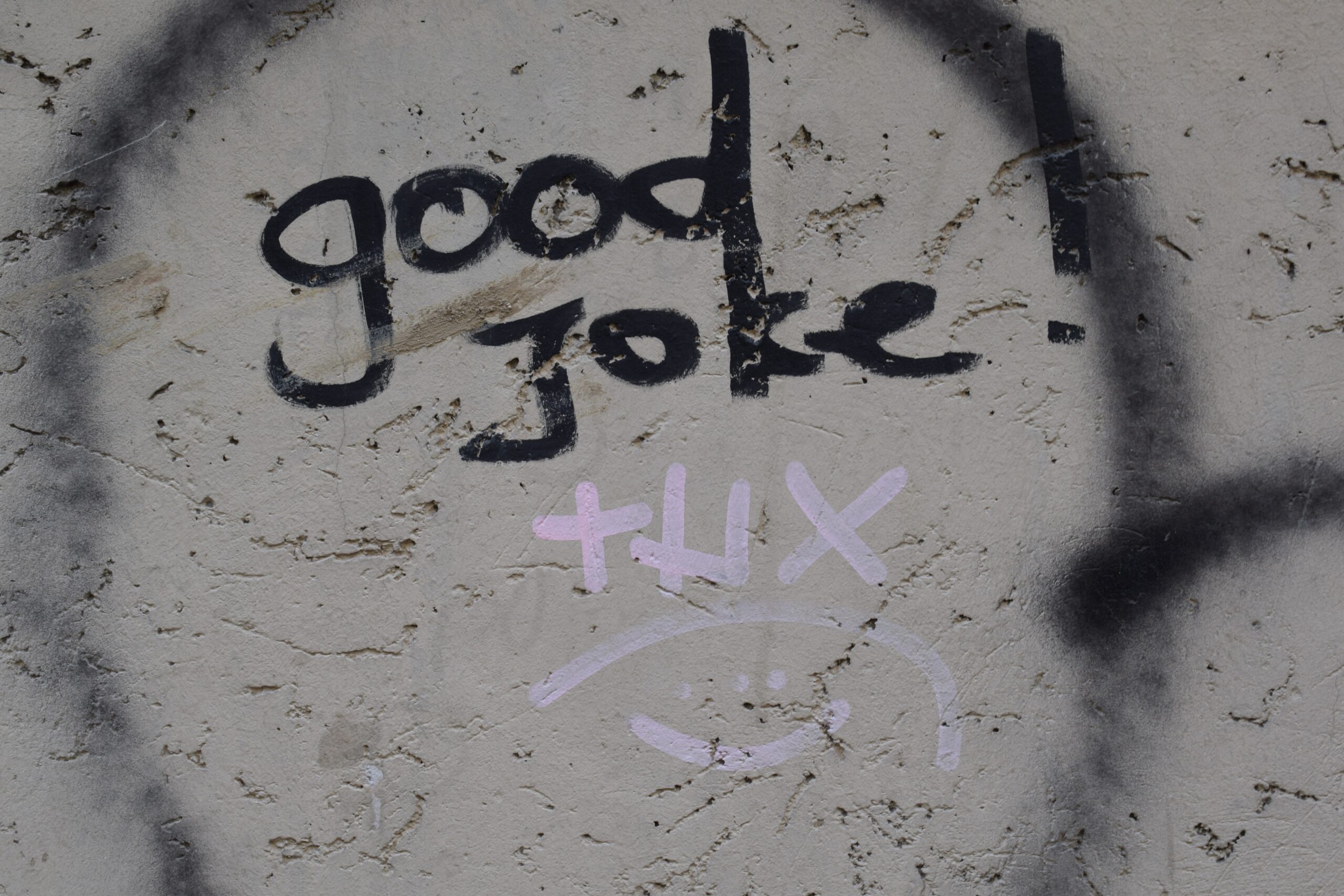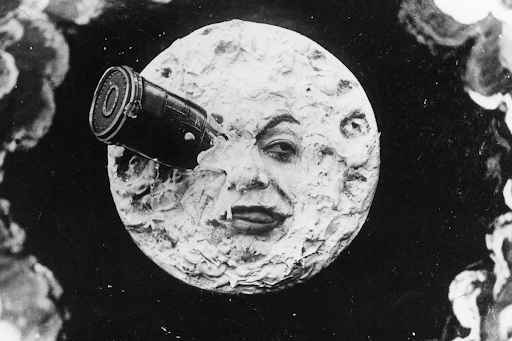Using Humour in Animation

Intro
Everybody likes to laugh.
That's why comedy has always been one of the most important genres in film, constantly fueling cinema's desire to entertain us.
The development of animation and film through history have always been closely connected and the importance of comedy and humour in animation is just as crucial. In fact, it's probably more important. Because animation is able to use and maximise some of the key attributes of humour. In this blog we'll be taking a look at how and why humour works so well in animation.
How humour in Animation has Changed over Time
To better understand what humour is, and especially what it is today, it's worth taking a little time to look at the evolution of humour in animation through the last 100 years or so.
Some of the very earliest films were animated and were funny. George Melies, one of the founders of modern cinema, used fantasy and comedy to entertain and delight his audience. He used a lot of animated sets and visual tricks to create the illusion of the fantastic.

Early animation, much like cinema, veered towards physical comedy to entertain us through necessity more than anything as films were silent. This was the era where Buster Keaton and Charlie Chaplin ruled and animation followed suit. The use of slapstick and visual gags were common, often along with a chase scene to cause more mayhem and action. The humour was simple and almost child-like, in keeping with an artform in its infancy. Two classic baby jokes are peek-a-boo and the jack-in-the-box surprise and these are still two visual gags that are used frequently in comedy animation to this day.
Surreal humour had always been a key element in animation because of the creative freedom the medium provided and this was explored further by Fleischer Studios in the 1930s.
With the introduction of sound and dialogue, the humour shifted towards characterization and language based jokes. The 50s brought television into the mainstream and the rise of the dialogue-heavy television sitcom. Humour became more sophisticated as wit and irony were more frequently used.
Recent decades have seen animated humour become more and more complex as satire has become one of the key driving forces in comedy. TV shows like The Simpsons, Southpark, Rick and Morty all use cultural reference points to create their iconic brand of humour.
Yes, the humour is certainly more sophisticated than the days of a cartoon mouse bashing a cat over the head with a hammer, but the humour is often still anarchic and brash as history has seen the artform shift from a childlike playfulness to something more adult and multi-layered.
Humour is timeless but the way it is used does change with audience taste and expectations.

How does humour work?
Content is successful if it keeps the audience engaged. This can be done by excitement (thrillers), scares (horror) or compelling stories (drama). It can also be done by laughter and enjoyment and this, on the most basic level, is how humour works.
What makes something funny is harder to define. If it was easy, I wouldn't be here writing this blog but would instead be sitting on a beach somewhere enjoying my new-found wealth from sales of the formula. Humour can't be defined, which like all of the best mediums, is what makes it so unpredictable and exciting. But some basic elements can be applied. Humour is usually created by setting up a situation, increasing the tension and then relieving that tension by something unexpected happening. The release of tension causes an outpouring of emotion in the form of laughter. That's how it's supposed to work anyway and it should work if it's done right. The mechanics are similar to how horror works… but with a different end result. The element of surprise is crucial and often, the bigger the surprise, the bigger the laugh.
Jokes can be strung together, building up or playing off of each other to create a running gag that works by repetition with the growing expectation of what comes next.
This release of tension is also connected to repression and this is why crude humour is often so spectacularly successful. Sex, bodily functions, and social assumptions and expectations… all the stuff we are not supposed to talk about, still have powerful taboo characteristics so when these are played with, laughter is released as a form of repressed tension.
For a great primer on the Theory of Humour, check out Peter McGraw's TED talk on 'What Makes Things Funny'. The TLDR lowdown is that humour occurs when three conditions are met: the situation is benign, and it is a violation, and these two conditions occur at the same time. For something to be funny, it should be unthreatening, and it must subvert the audience's expectations.
Comedy also develops out of a character's personality - their mannerisms, convictions, attitude, demeanour and dialogue. Increasing and exaggerating these traits increases the humour. Take a character and give it a twist. Creating contrast and contradiction also creates a naturally humorous scenario - a tall and short couple, a clown who hates kids, a grown man who thinks he's an elf etc.
This juxtaposition of contrasting themes, ideas and characteristics is the bedrock of so many great comedies, especially for satire.
When an audience starts watching a comedy they expect to laugh and be amused. This makes the filmmakers job easier as they are already receptive to humour and in the right frame of mind. But it's still important to deliver those jokes, especially at the beginning as this will set the tone for the rest of the film and establish that the viewer definitely is watching a comedy. This opening scene to Team Amercia is a great example, loaded to breaking point with cliches which are then blown apart… literally.
Humour around the World
Although laughter is a language that is shared by all humans around the world, the things that make us laugh are not so universal. Humour can vary from country to country and a joke that works in one country may not work in another. In general, visual and physical comedy is the form most universally appreciated, but where it is based on language and culture it can vary wildly. In some countries humour is based on language and a play with words, in others on satire, irony, self-deprecation or regional rivalry.
So if you are making a comedic film that is intended for international audiences, think about how your audience will react to the humour and keep that in mind if you want to tell the joke about the man who had the entire left side of his body cut off but was released from hospital by doctors who said he was alright.
Why Creating Humour in Animation is Often Easier than Real Life.
Anything can Happen.
While SFX have meant that most things can now be recreated on the screen, it still remains an expensive way of making a film. With animation, on the other hand, you start with a blank slate and can create anything, limited only by your imagination. Physical laws are meaningless. This is a great asset for comedy especially for visual comedy. A toilet in the middle of the desert? No problem. A talking rabbit? Easy.
The physical limitations between animation and reality were brilliantly explored in the 1988 film Who Framed Roger Rabbit?.
Visual Storytelling
Animation is primarily a visual medium and so it's ideal for delivering visual gags. Therefore the maximum number of people can understand it and not be confused or put off by language.
Control
Creating characters and worlds from scratch gives you complete control over what happens on the screen. You can determine the physique and facial expressions of characters and use and abuse the laws of physics to make the absurd believable.
Suspension of Disbelief
A mouse bashing a cat over the head with a hammer in real life is not only physically difficult, but it would likely cause severe injury or death. And that's not particularly funny. But a cartoon mouse bashing a cartoon cat over the head with a hammer is funny as there are no real life repercussions. Animation allows that suspension of disbelief so that the absurdity and humour of a situation is allowed to come through, however dark the action is. That's a key element of humour - the ability to play with the unexpected.
Exaggeration
Comedy is an exaggeration of real life. Animation allows you to easily exaggerate real life. Therefore… comedy in animation is easier.
Humour in Animated Explainer Videos
Explainer videos are often dry and information-heavy and that can make them boring. Humour is an ideal tool to use to break that boredom and keep the audience engaged. Research also shows that we retain information better if it is delivered in a humorous way. Making an emotional connection to your audience is a key part of making a successful video - whether that means delivering a message, driving sales or increasing brand loyalty.
Throwing in some humour at the beginning of a video can help set the tone and grab the viewer's attention. It can then be used in intervals to maintain that engagement throughout. But balance is needed - if there's too much humour, it will become a comedy and not taken seriously.
The kind of humour should also be appropriate to the message or brand. Shock or sarcasm are not really going to work very well and the humour should probably be inoffensive to avoid turning the audience off with a misunderstood joke.
Conclusion
"Dying is Easy. Comedy is Hard"
Famous showbiz adage
Everybody likes to laugh. Getting them to laugh is the hard bit. But if you succeed, the results are amazing.
Comedy in animation follows all the conventions of comedy in other formats but is even better suited to delivering humour because of its strong visual focus and its ability to play with reality and logic. Smart and playful dialogue can also be used to build up the relationship between the characters and the audience. It's no coincidence that some of the greatest animated films have also been comedies.
